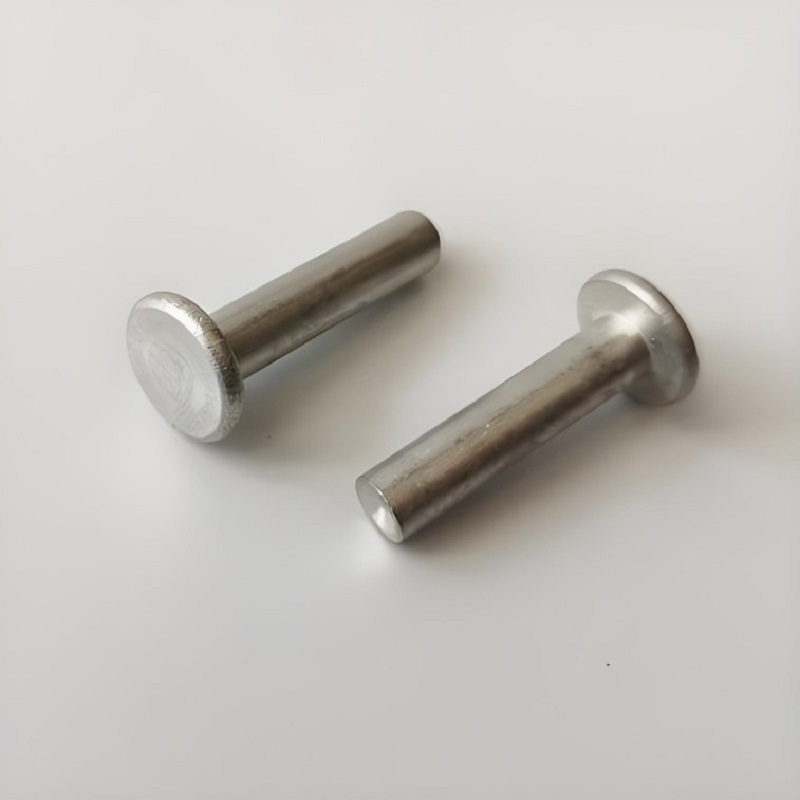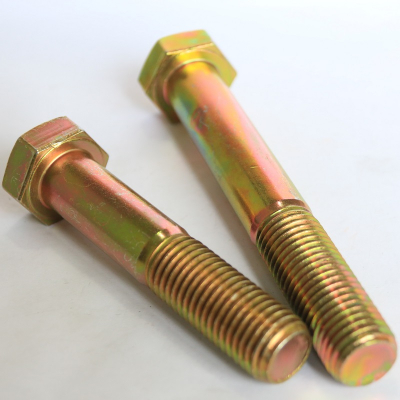Flat Head Rivets
Product: Flat Head Rivets
Property Class:4.8
Finish:Zinc Plating(Yellow Zinc, Zinc Blue, Rinse Color), Black, Phosphate & Oil, Zinc Phosphate, Hot-dip Galvanized(HDG),Dacromet, Geomet
Material:Q235
Export country: USA, Japan, Australia, Europe and so on
Support customer customization
Flat head rivets are a type of fastener with a specific design and function. The head of the rivet is a flat surface. This design allows the head to not protrude significantly when connecting two surfaces, helping to maintain the connection surface. of flatness. Flat head rivets can effectively prevent material displacement during the connection process, and are especially suitable for connection scenarios that require precise alignment. Some flat head rivets (such as galvanized flat head rivets) have excellent corrosion resistance and are suitable for connection needs under various environmental conditions.
Flat head rivets are mainly used to connect two vertical surfaces, such as metal plates. It ensures that materials will not shift during the connection process, thereby providing a stable and reliable connection effect.
Pictures
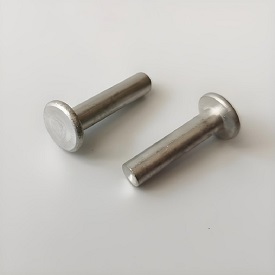
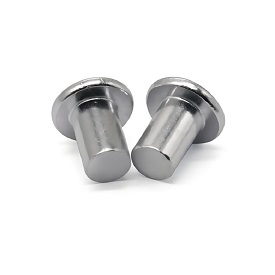


Product drawing(M10×32)
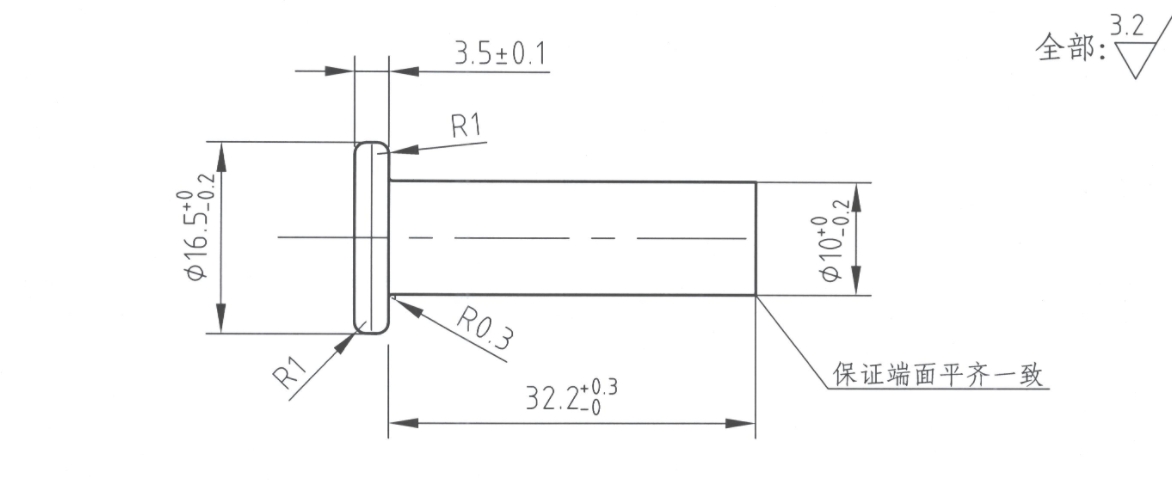
Some introduction about our company
Application
Our products are widely used in mechanical, electrical, automotive, building construction, railways, bridges, steamships, fire protection and communication system, etc.

Workshop

Certification
Through scientific management, Jinan Star Fastener Co., Ltd. has obtained the 2015 version of ISO9001 quality management system certification. In 2017, the laboratory passed the national CNAS certification. In 2018, the company passed the European CE certification.
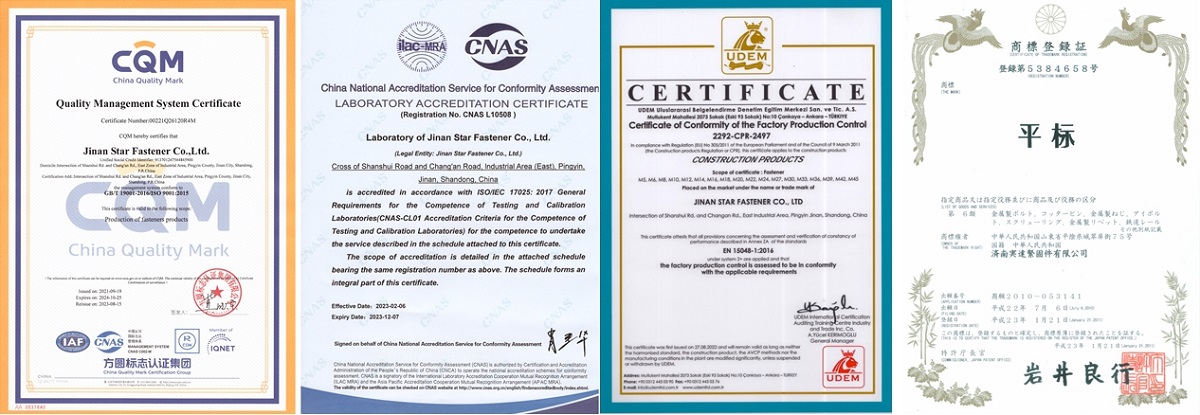

Testing Equipment
Our company has a specialized laboratory with digital hardness testers, microscopes, universal testing machines, axial force meters, hydrogen embrittlement detection devices, magnetic particle flaw detectors, metallographic analyzers, carbon and sulfur analyzers and salt spray testing machines, etc. Experimental testing equipment is used to conduct comprehensive testing of the chemical composition of raw materials, product hardness, mechanical properties, coating thickness and corrosion resistance to ensure that all products meet standard requirements and satisfy customers.

Production equipment
Our company has more than 300 production equipment.The product production process includes: Annealing, shot blasting, cold heading, thread rolling, heat treatment, galvanizing, finished product testing, packaging, etc. are all completed in the company.


Packing

FAQ
1. What are the characteristics of flat head rivets?
A flat head rivet is a fastener with a flat head, which is characterized by a flat head surface that does not produce obvious protrusions on the surface of the materials being joined. This design helps keep the joining surface flat and prevents materials from shifting during the joining process.
2. What materials are flat head rivets made of?
The flat head rivets we produce are made of various materials, including aluminum, steel, copper and stainless steel. The choice of these materials depends on the specific application environment and needs. We can customize it to your needs.
3. How to choose the specifications and sizes of flat head rivets?
Flat head rivet specification and size selection should be based on the thickness of the material being joined, hole size, and the required strength of the connection. Typically, the length of the rivet needs to be slightly longer than the total thickness of the material being joined to ensure that the rivet can fully penetrate and securely connect the two materials. At the same time, the hole size should be moderate to ensure that the rivet can pass through smoothly and fit tightly against the material.
4. What are the installation and precautions for flat head rivets?
When installing flat head rivets, you need to ensure that the rivets are perpendicular to the surface of the material being joined, and that the rivets are positioned correctly to ensure a secure connection. During the installation process, attention also needs to be paid to controlling the pressure to avoid material damage or deformation. In addition, attention needs to be paid to selecting appropriate rivet specifications and quantities to meet the strength requirements of the connection.
5. What is the difference between flat head rivets and semi-round head rivets?
The main difference between flat head rivets and round head rivets is the head shape and purpose. Flat head rivets have flat heads and are suitable for joining two vertical surfaces, such as between sheets of metal. The head of the semi-round head rivet is slightly curved and arc-shaped, which is more suitable for connecting materials with curved surfaces, such as pipes or metal plates at corners.
Submitted successfully
We will contact you as soon as possible


